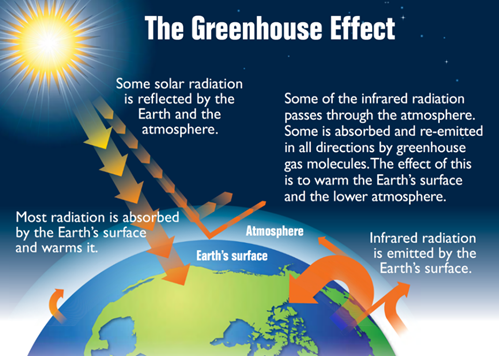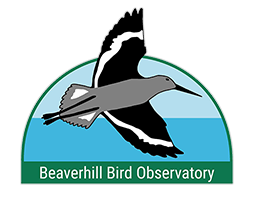What is Climate Change
Sunday, November 12, 2017Climate Change – the broad strokes
Now that winter is here, most of our beloved birds have flown south, where they have access to abundant food sources. They may be gone, but we are not! Throughout the winter, the Beaverhill Bird Observatory is going to keep you up to date on changes and challenges facing our birds. In particular, we are going to be letting you know about the impacts that Climate Change has on the environment and how these changes impact birds. Examples of these impacts include changing temperatures, storms, flooding, fires, drought, rising sea level, mistiming, and more. We’ll update you on what researchers are learning about how birds are being affected by and in some cases adapting to these changes throughout their life cycle.
What is Climate Change?
Climate Change is the gradual change in the Earth’s overall temperature, with the changes in environmental conditions that go along with it. This is often confused with Global Warming, and they are related. Global Warming describes how our planet’s average temperature is increasing overall, but not uniformly in every place. Climate Change accounts for this variation in warming and cooling in different locations, and also includes the increase in extreme weather events and other effects that come with this change, such as the melting of the glaciers.
Why is Climate Change Happening?
Many factors contribute to Climate Change. Deforestation and the burning of fossil fuels are two major factors. When fossil fuels are burned they release certain types of Greenhouse Gases, such as carbon dioxide and methane. These gases are appropriately named because they behave like a greenhouse. When these gases are released into the atmosphere, they reflect thermal radiation.  Radiation comes through the atmosphere from the sun, but instead of bouncing off the surface of the Earth and reflecting back into space, the heat is absorbed by the atmosphere, warming the Earth. We are also accelerating this effect by cutting down vast amount of forests for wood products and agriculture. Trees use carbon dioxide to produce sugar, cellulose, and other products they need. However, the more we cut down, the fewer trees there are to remove carbon dioxide from the atmosphere. It is natural to have a certain amount of greenhouse gases in the atmosphere (otherwise we would be very cold!), but since the industrial revolution, we have released more of these gases to the point that concentrations are higher now than they have been in the last 400 000 years! This kind of rapid change comes with consequences.
Radiation comes through the atmosphere from the sun, but instead of bouncing off the surface of the Earth and reflecting back into space, the heat is absorbed by the atmosphere, warming the Earth. We are also accelerating this effect by cutting down vast amount of forests for wood products and agriculture. Trees use carbon dioxide to produce sugar, cellulose, and other products they need. However, the more we cut down, the fewer trees there are to remove carbon dioxide from the atmosphere. It is natural to have a certain amount of greenhouse gases in the atmosphere (otherwise we would be very cold!), but since the industrial revolution, we have released more of these gases to the point that concentrations are higher now than they have been in the last 400 000 years! This kind of rapid change comes with consequences.
Where do Greenhouse Gases come from?
In Alberta, a major source of greenhouse gases such as carbon dioxide derives from burning fossil fuels, including diesel, gasoline, natural gas, and propane. Often these gases are burned in vehicles, power plants, and other industrial operations. Planes, cars, busses, and trains all produce carbon emissions, but an airplane flight is the most carbon expensive method of travel. Transportation is an obvious producer of greenhouse gas emissions, but there are many subtle sources of greenhouse gases as well. For example, Alberta has a lot of cattle ranching for meat and dairy. Cows release methane gas directly into the atmosphere, and they are also an inefficient source of food energy. In addition, as the Earth gradually warms, permafrost melts, and releases methane into the atmosphere. This creates a positive feedback system, where the warming climate causes the release of more greenhouses gases, which make it warmer.
BBO will talk more about the effects of Climate Change on our environment, and what you can do about it, in future reports.
You can find more information at:
Photo Credt:
Earth's Greenhouse Effects, by US EPA. 1 December 2012. https://commons.wikimedia.org/wiki/File:Earth%27s_greenhouse_effect_(US_EPA,_2012).png
The Earth seen from Apollo 17. By NASA/Apollo 17 crew; taken by eitherHarrison Schmitt or Ron Evans. 7 December 1972. https://commons.wikimedia.org/wiki/File:The_Earth_seen_from_Apollo_17.jpg
Blog Posts
- What is Climate Change
- Drought: What Can We Do?
- Migration and Climate Change; a Complicated Relationship (Part 1)
- Migration and Climate Change; a Complicated Relationship (Part 2)
- Climate Change and Birds’ Resources
- Ladder to Extinction
- Arctic Warming and Ecosystem Impacts
- Climate Change Connection to Mountain Pine Beetle
- Tackling Climate Change Denialism
- Impact of Climate Change on Bluebirds
- An Introduction to Climate Change
- Great Decline of Aerial Insectivores
- Role of Oceans in Fighting Climate Change
- Role Of Forests In Fighting Climate Change
- Impact of Climate Change on Shorebirds
- Impact of Hurricanes and Climate Change on Birds
- An Introduction to Climate Change.
- Impact of Forest Fires, and Climate Change on the Nature
- Impacts of Climate Change on Owls
- Impacts of Climate Change on Birds of Prey
- Whitebark Pine and Clark's Nutcracker
- COVID 19 & The Environment
- Impact of Global Warming on Bird Anatomy and Colour Polymorphism
- Climate Change & West Nile Virus
- All Posts

